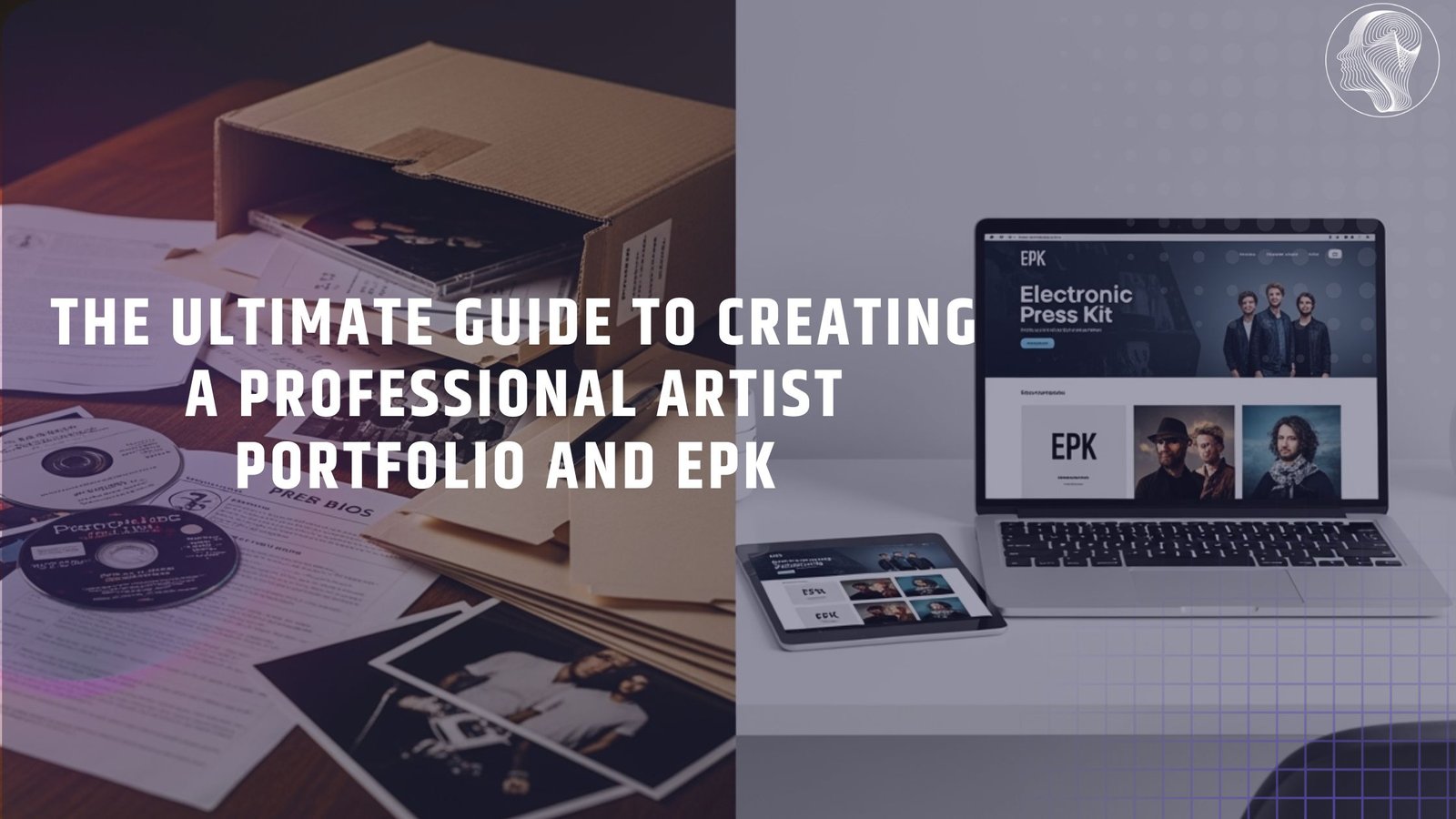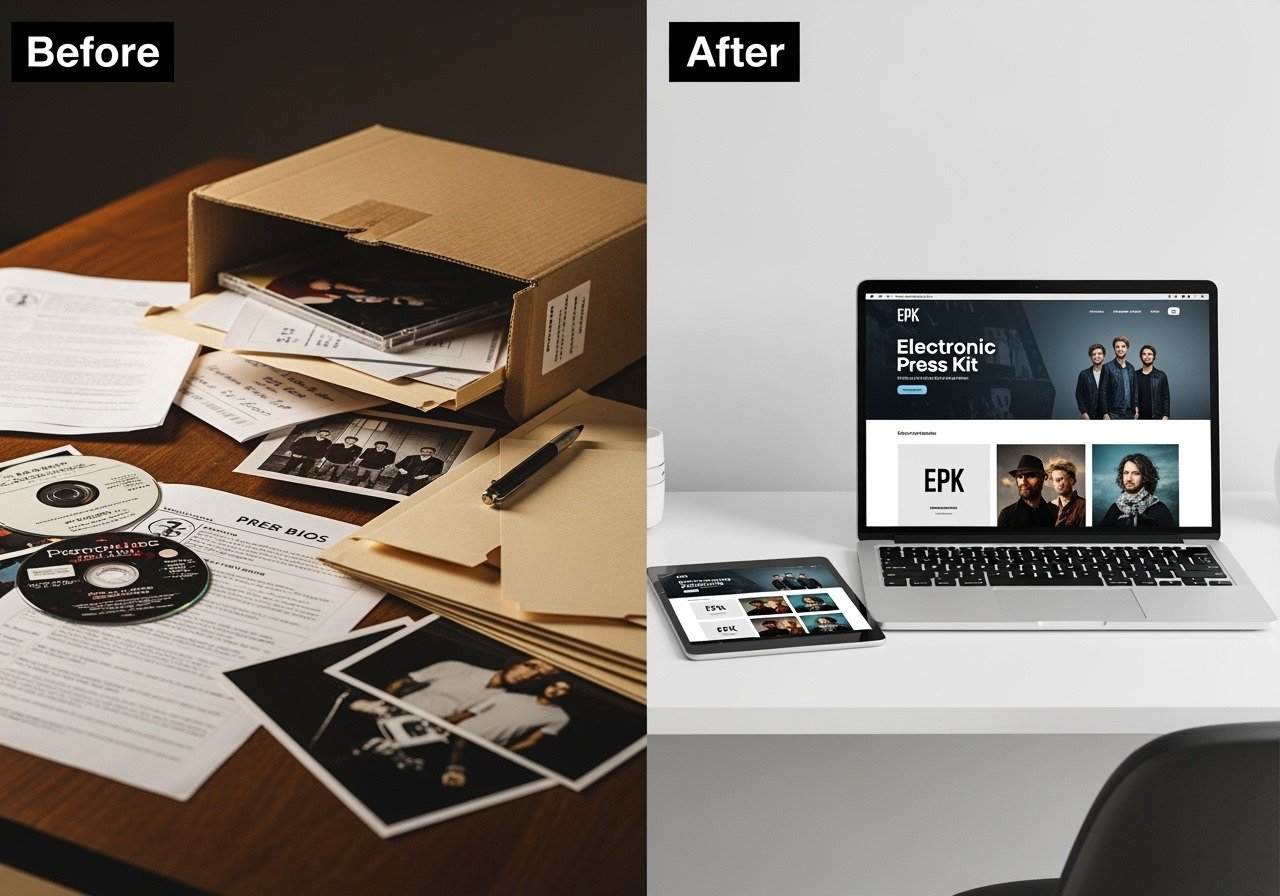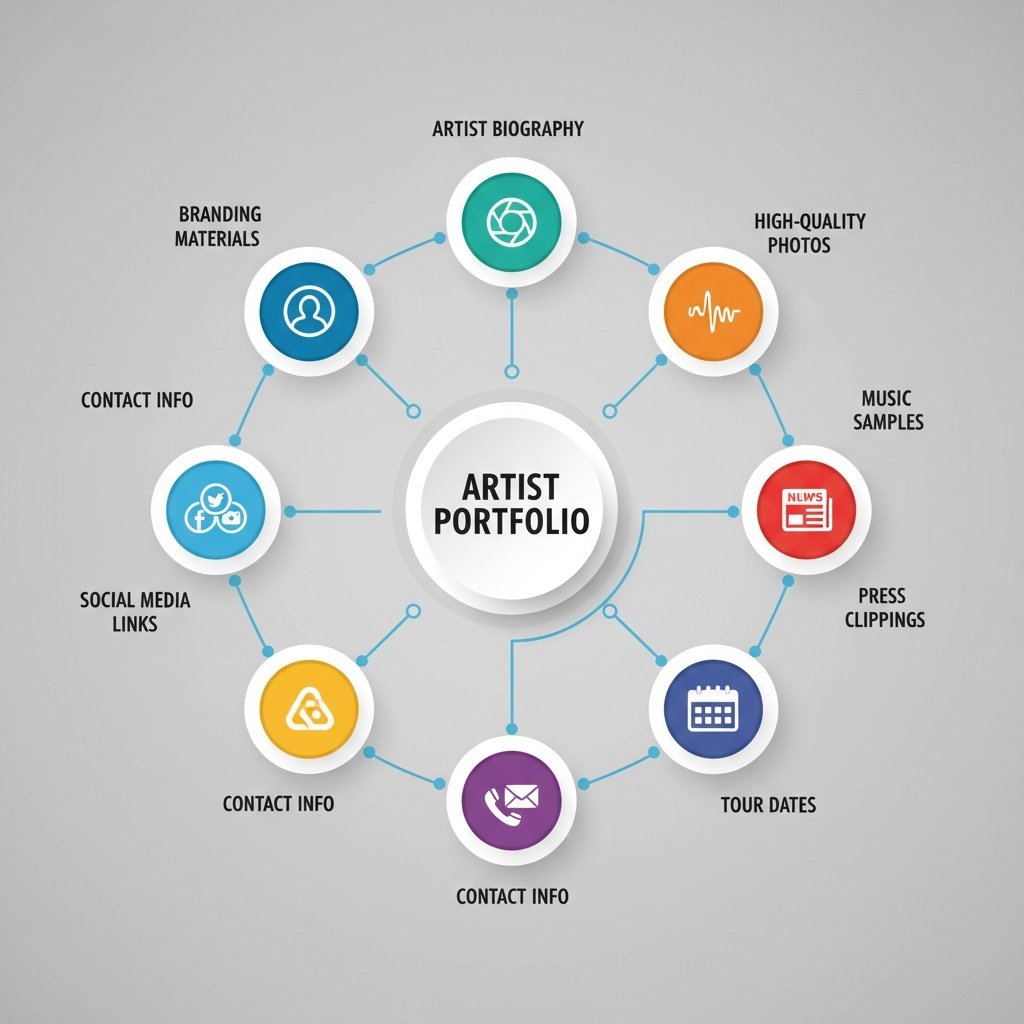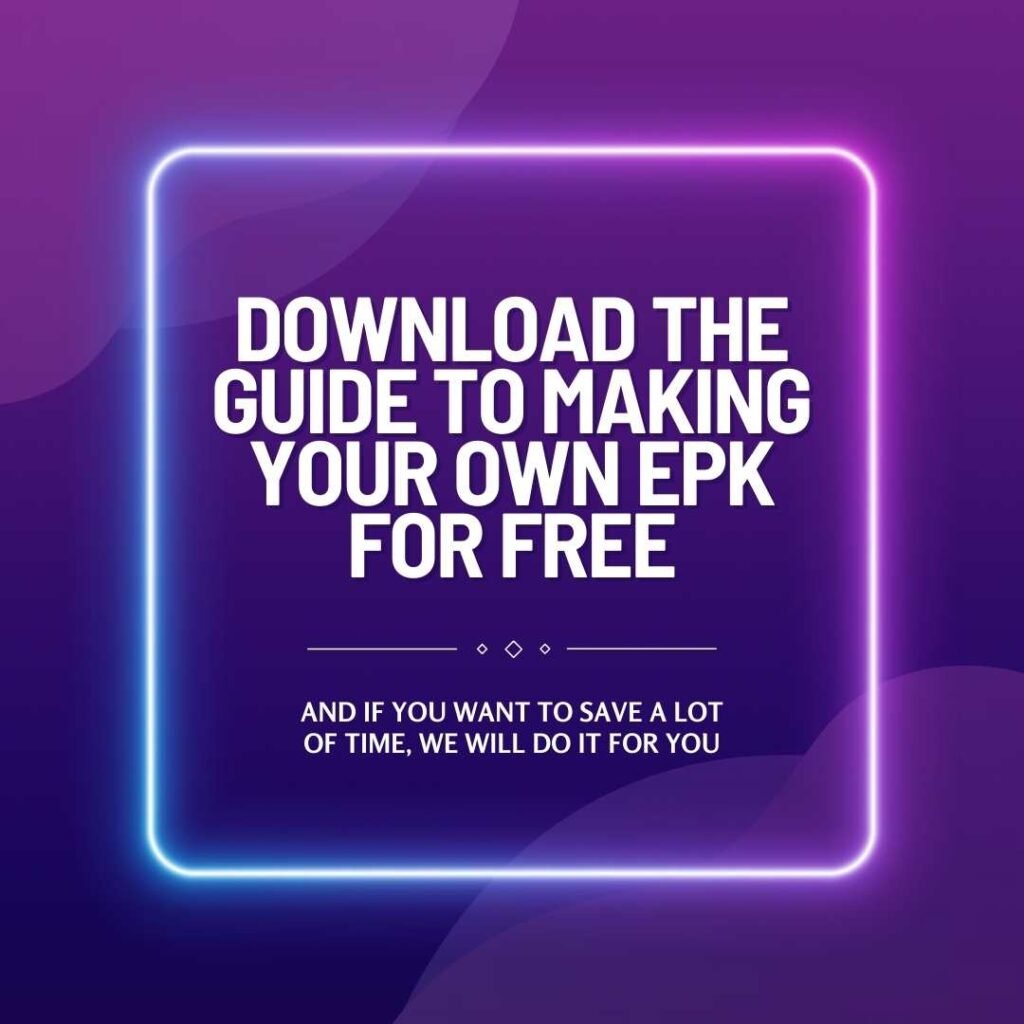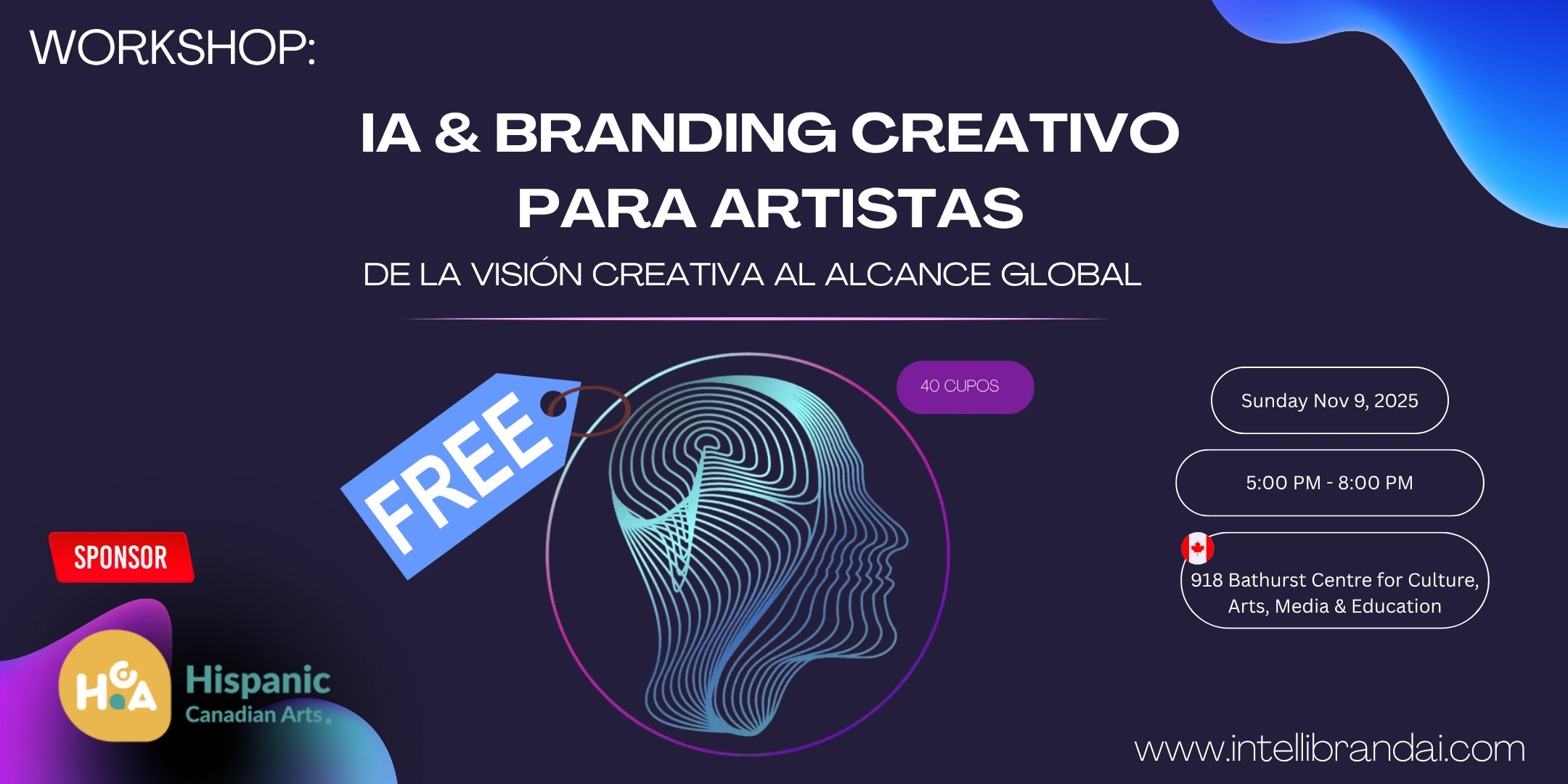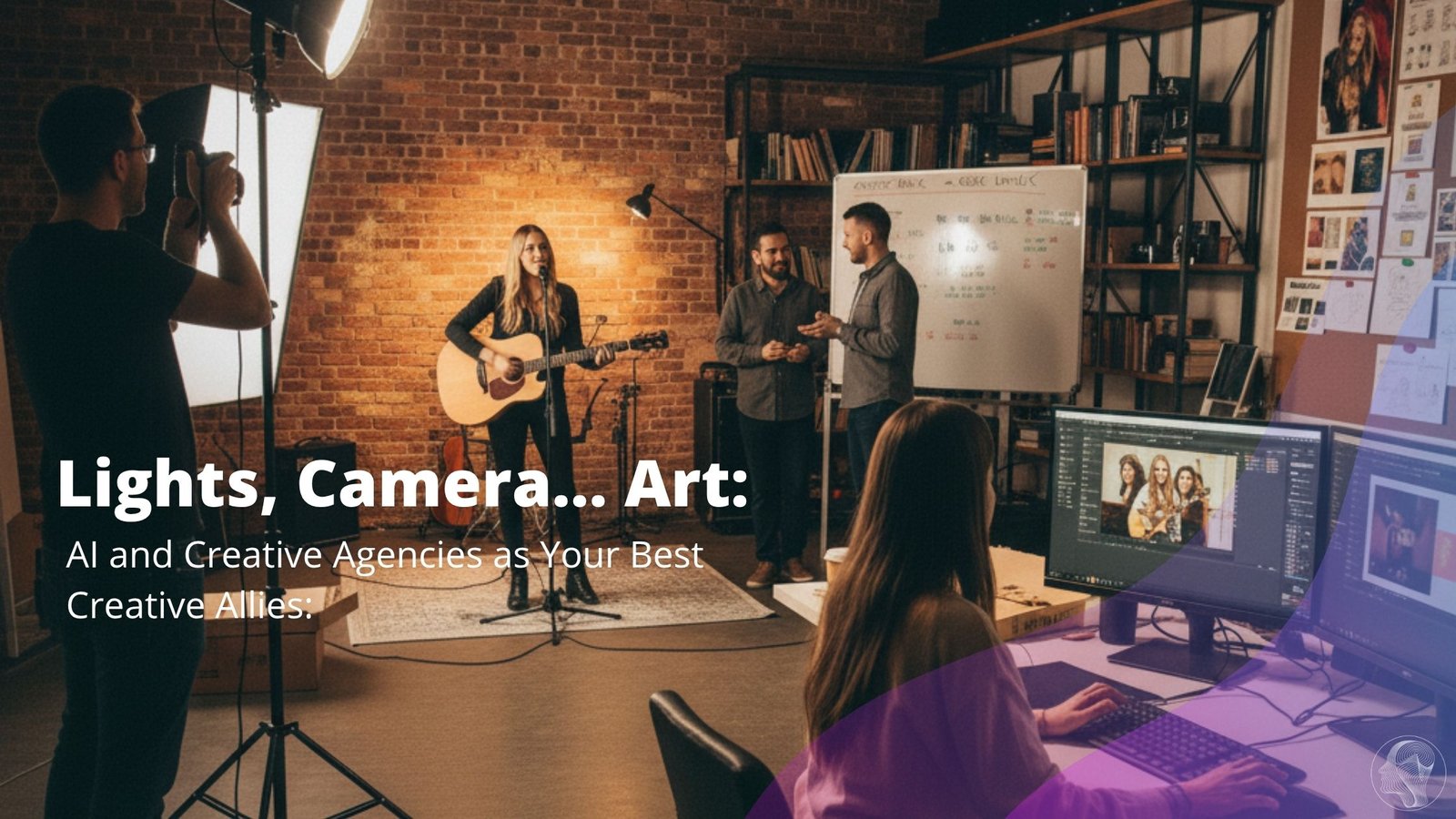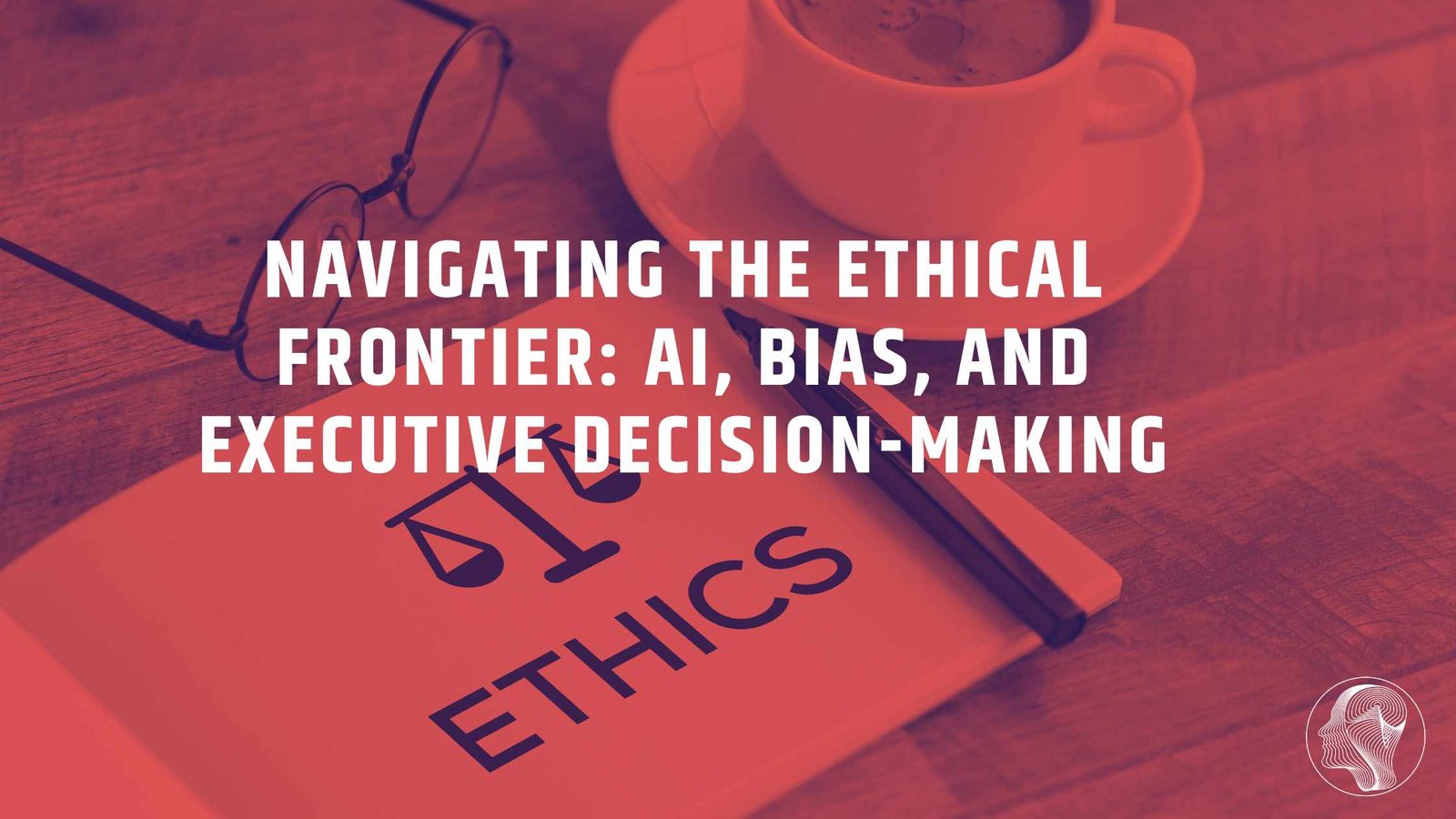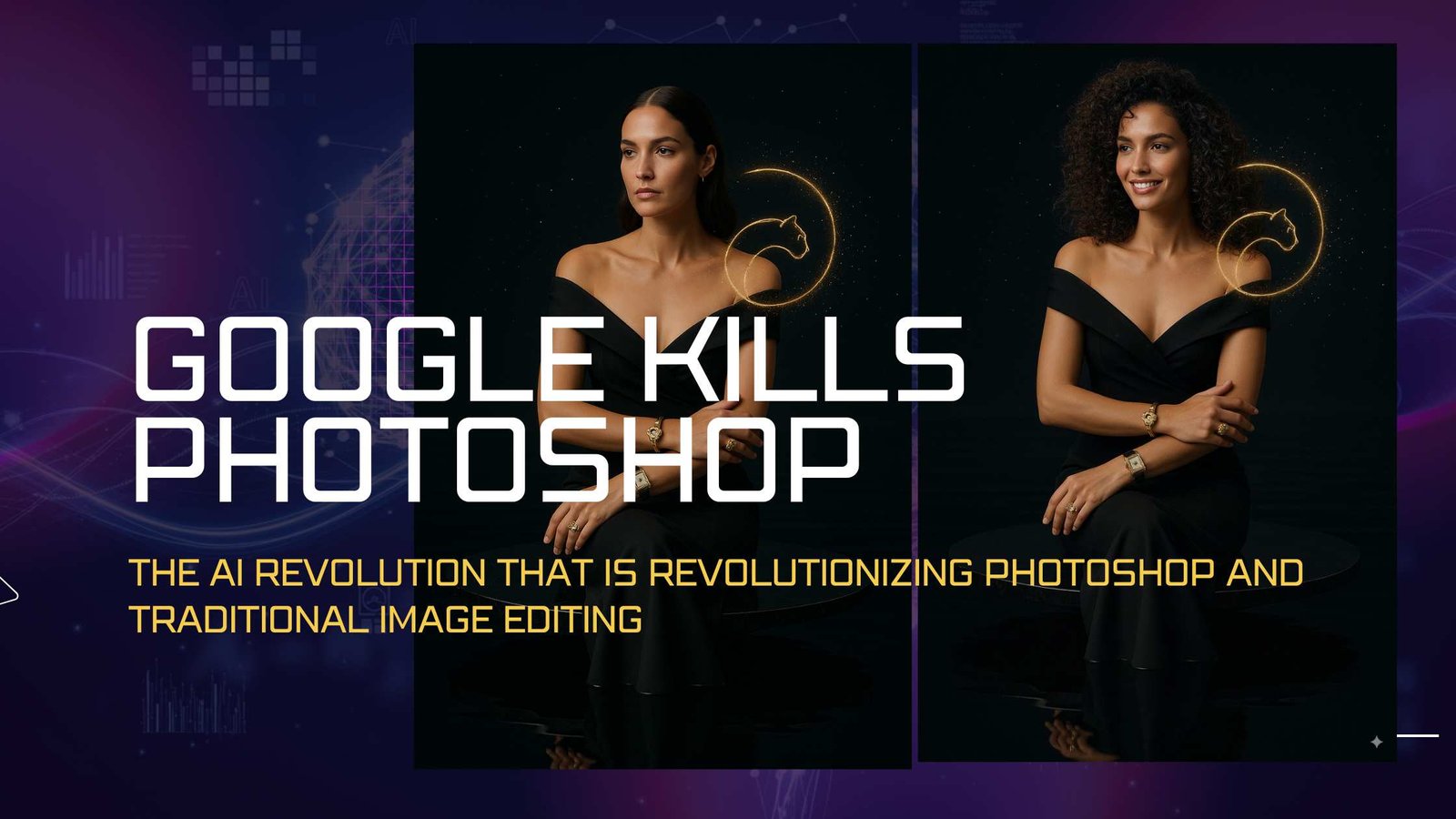In today's competitive creative landscape, a strong professional portfolio and Electronic Press Kit (EPK) are no longer optional—they are essential tools for any artist looking to advance their career. Whether you're a musician seeking a record deal, a visual artist applying for a gallery exhibition, or a freelance creative pitching to new clients, your portfolio and EPK are your digital handshake, your resume, and your highlight reel all in one. They are the first impression you make on industry professionals, and a well-crafted presentation can be the difference between being overlooked and getting the opportunity of a lifetime.
This guide will walk you through everything you need to know to create a compelling and effective artist portfolio and EPK. We'll cover the essential components, best practices, and common mistakes to avoid, ensuring you have all the tools you need to showcase your talent and professionalism. We'll also provide examples and inspiration to help you get started.
Table of Contents
ToggleWhat is an EPK/Artist Portfolio?
An Electronic Press Kit (EPK), often used interchangeably with a digital artist portfolio, serves as a comprehensive digital package of promotional materials for artists. It's designed to provide industry professionals—such as booking agents, journalists, record labels, art curators, and potential clients—with all the necessary information to understand an artist's work, background, and professional capabilities at a glance. Think of it as a dynamic, always-on resume and showcase that highlights your best work and professional achievements [1].
Historically, press kits were physical folders filled with printed materials, photos, and CDs. With the advent of the internet, these have evolved into digital formats, making them more accessible, easier to distribute, and environmentally friendly. A well-structured EPK or artist portfolio acts as a central hub for your professional identity, streamlining the process for others to discover, evaluate, and engage with your artistic endeavors.
For musicians, an EPK is crucial for securing gigs, media coverage, and label interest. For visual artists, a digital portfolio is vital for gallery submissions, commissions, and showcasing their unique style and range. Regardless of your artistic discipline, a professional digital presence is paramount, and the EPK/portfolio is the cornerstone of that presence.
Essential Components of a Powerful Artist Portfolio/EPK
A compelling artist portfolio or EPK is built upon several key elements, each serving a distinct purpose in presenting your professional image and artistic prowess. The following components are universally recognized as crucial for a comprehensive and effective digital kit:
1. Artist Biography/About Section
Your biography is more than just a chronological account of your career; it's your story. It should be concise, engaging, and highlight your unique journey, artistic vision, significant achievements, and any notable influences. Craft different versions: a short, punchy paragraph for quick reads, a medium-length version for general use, and a longer, more detailed narrative for deeper dives. Ensure it's written in the third person and focuses on what makes you unique as an artist [2].
2. High-Quality Visuals: Photos and Videos
Visuals are paramount. They are often the first thing industry professionals look at and can significantly impact their perception of your professionalism.
Professional Press Photos: Include a selection of high-resolution, professionally shot photographs. These should include headshots, full-body shots, and action shots (e.g., performing live, working in the studio). Offer a variety of orientations (landscape, portrait) and moods to suit different media needs. Ensure these images reflect your brand and artistic aesthetic. For professional photography services, platforms like the Professional Photographers of America can help you find qualified photographers, or consider our specialized content creation services for artist photography and video production [3].
Music Videos/Performance Footage: For musicians, high-quality music videos, live performance clips, and even behind-the-scenes content are invaluable. For visual artists, this could include videos of your creative process, exhibition walkthroughs, or interviews. Video content provides a dynamic way to showcase your talent and personality. Tools like Adobe Creative Suite offer professional video editing capabilities.
3. Audio Samples/Music (for Musicians)
This is the core of a musician's EPK. Include your best, most representative tracks. These should be professionally mixed and mastered. Provide streaming links from platforms like Spotify for Artists, Apple Music for Artists, and SoundCloud for Artists and, if appropriate, high-quality downloadable files (WAV or high-bitrate MP3s). Distribution services like CD Baby and DistroKid can help get your music on all major platforms. Curate your selection to showcase your versatility and strongest material, typically 3-5 tracks [4].
4. Press Clippings and Reviews
Credibility is built through external validation. Compile a curated selection of positive reviews, articles, interviews, and media mentions from reputable sources like Rolling Stone, music blogs, and industry publications. This section demonstrates media interest and provides social proof of your impact and recognition within the industry. Include direct links to the original publications whenever possible, and use Google News to stay updated on coverage [5].
5. Tour Dates/Performance History
For performing artists, a comprehensive list of past and upcoming tour dates and significant performances is essential. This showcases your experience, audience reach, and availability. Booking agents and promoters rely heavily on this information to assess your viability for future engagements. Performance rights organizations like ASCAP and BMI provide valuable resources for touring musicians.
6. Contact Information
Make it incredibly easy for people to reach you or your team. Include clear contact details for general inquiries, booking, press, and management (if applicable). Provide email addresses and phone numbers. A dedicated contact form on your EPK webpage can also be beneficial. Consider our digital marketing services for comprehensive contact management and lead generation.
7. Social Media and Website Links
Provide direct, active links to your official website and all relevant social media platforms. For visual artists, Behance and Artsy are excellent platforms for showcasing work. Musicians should maintain active profiles on Instagram, Facebook, Twitter, YouTube, and TikTok. Ensure these links are up-to-date and that your online presence is consistent and professional across all channels.
8. Technical Rider/Stage Plot (for Musicians)
For musicians, a technical rider outlines all the technical requirements for a live performance, including sound, lighting, and stage setup. A stage plot visually represents where instruments and equipment will be placed on stage. These documents are crucial for venues and production teams to ensure a smooth performance.
9. Logos and Branding Materials
Consistency in branding reinforces your professional image. Include high-resolution versions of your logo, brand guidelines (if applicable), and any other visual assets that media outlets might need for promotional purposes. Design tools like Canva can help create professional graphics, or consider our specialized branding and design services for comprehensive brand development.
10. Fan Engagement Elements
While primarily for industry professionals, an EPK can also serve your fanbase. Consider including links to your merchandise store, a newsletter sign-up, or exclusive content that encourages fan interaction and loyalty. Platforms like Squarespace offer excellent e-commerce integration for artist websites.
Common Mistakes to Avoid When Creating Your EPK/Portfolio
Even with the best intentions, artists often make common mistakes that can undermine the effectiveness of their EPK or portfolio. Avoiding these pitfalls is as important as including the right elements:
1. Outdated Information
One of the most frequent and detrimental mistakes is failing to keep your EPK updated. Old bios, broken links, or outdated tour dates signal a lack of professionalism and can deter potential opportunities. Regularly review and refresh all content, especially contact information, music links, and press clippings.
2. Poor Quality Assets
This cannot be stressed enough: low-resolution photos, grainy videos, or poorly recorded audio are immediate red flags. They suggest a lack of commitment to your craft and can significantly diminish your credibility. Invest in professional photography, videography, and audio production. Your EPK is a reflection of your artistic quality.
3. Overloading with Content
While comprehensiveness is good, overwhelming industry professionals with too much information is counterproductive. They have limited time. Be selective and present only your best, most relevant work. A concise, impactful EPK is far more effective than a lengthy, disorganized one. Focus on quality over quantity.
4. Lack of Clear Call to Action
What do you want the recipient to do after viewing your EPK? Whether it's to book a show, write a review, or consider you for a project, make your intentions clear. Include a prominent call to action and ensure the path to fulfilling it is straightforward.
5. Difficult Navigation or Accessibility
Your EPK should be intuitive and easy to navigate. If it's a website, ensure it's mobile-friendly and loads quickly. If it's a downloadable PDF, ensure the file size is manageable and all embedded links are clickable. A frustrating user experience will lead to quick abandonment.
6. Generic Content
Avoid generic, templated content that doesn't reflect your unique artistic voice. While templates can be a starting point, personalize your EPK to showcase your individuality. Tailor your biography and content to resonate with your specific audience or the opportunity you're pursuing.
7. Missing Key Information
Ensure all essential components listed above are included. Omitting crucial elements like contact information, music samples, or a biography forces industry professionals to search elsewhere, which they are unlikely to do.
8. Poorly Written Biography
A biography filled with grammatical errors, typos, or overly self-indulgent language can be off-putting. If writing isn't your strong suit, consider hiring a professional writer or editor to craft a compelling narrative that accurately represents you.
9. Ignoring SEO (for online EPKs)
If your EPK is a webpage, neglecting Search Engine Optimization (SEO) means fewer people will find it. Use relevant keywords in your titles, headings, and content. Optimize images with alt text and ensure your site has a clear structure to improve its visibility on search engines.
Best Practices for a Standout Artist Portfolio/EPK
Beyond avoiding common pitfalls, adhering to best practices will elevate your EPK or portfolio from merely functional to truly exceptional:
1. Keep it Concise and Impactful
While it's tempting to include everything you've ever done, remember that industry professionals are busy. Present your strongest, most relevant work upfront. A concise, well-curated EPK that gets straight to the point is far more effective than an exhaustive one. Aim for quality over quantity in every section.
2. Professionalism is Key
Every element of your EPK, from the design to the content, should exude professionalism. This includes high-quality visuals, well-written text, and a clean, easy-to-navigate layout. A professional presentation signals that you take your craft seriously and are ready for serious opportunities.
3. Ensure Easy Accessibility and Shareability
Your EPK should be easily accessible and shareable. Hosting it on a dedicated webpage with a clean, memorable URL is ideal. Platforms like Webflow and WordPress offer excellent EPK hosting solutions. If you're using a downloadable PDF, ensure the file size is optimized for quick downloads and that all embedded links are active. The easier it is for someone to access and share your EPK, the more likely it is to be seen.
4. Regular Updates and Maintenance
Your artistic journey is continuous, and so should be your EPK. Make it a habit to regularly review and update all sections. This includes adding new music, photos, press clippings, and updating tour dates or contact information. An up-to-date EPK reflects your current status and ongoing activity.
5. Tailor Your Content (When Possible)
While a core EPK should be comprehensive, consider creating slightly tailored versions for specific opportunities. For instance, if you're pitching to a specific genre-focused blog, you might highlight certain tracks or press mentions that are more relevant to their audience. This shows you've done your homework and are genuinely interested in the opportunity.
6. Invest in High-Quality Visuals
As mentioned, visuals are critical. If your budget allows, invest in professional photography and videography. These assets are not just for your EPK; they are foundational for all your marketing and promotional efforts. High-quality visuals capture attention and convey a strong brand image.
7. Clear and Prominent Contact Information
This is non-negotiable. Your contact information should be immediately visible and easy to find. Include multiple ways to get in touch (email, phone, social media links) and specify who to contact for different types of inquiries (e.g., booking, press, general).
SEO and Backlinking Strategies for Enhanced Visibility
In the digital age, simply having an EPK or portfolio isn't enough; it needs to be discoverable. Implementing effective Search Engine Optimization (SEO) and backlinking strategies can significantly increase your visibility and reach a wider audience of industry professionals and fans.
Search Engine Optimization (SEO)
SEO involves optimizing your online content to rank higher in search engine results. For your EPK or portfolio, this means:
Keyword Research: Identify relevant keywords that potential collaborators, fans, or industry professionals might use to find artists like you. Use tools like Google Keyword Planner to research and incorporate these keywords naturally into your biography, project descriptions, and other text content.
Optimized Titles and Meta Descriptions: Craft compelling and keyword-rich titles and meta descriptions for your EPK webpage. These snippets are what appear in search results and can significantly influence click-through rates. Google Search Console provides valuable insights for optimization.
High-Quality Content: Search engines prioritize valuable, well-written content. Ensure your EPK provides comprehensive and engaging information about your work.
Mobile Responsiveness: A significant portion of internet traffic comes from mobile devices. Ensure your EPK is fully responsive and provides a seamless experience across all screen sizes. Use Google's Mobile-Friendly Test to verify your site's mobile compatibility.
Fast Loading Speed: Optimize images and code to ensure your EPK loads quickly. Slow loading times can deter visitors and negatively impact your search ranking. Tools like Google PageSpeed Insights can help identify optimization opportunities.
Backlinking Strategies
Backlinks, or inbound links from other websites to yours, are a crucial factor in SEO. They signal to search engines that your site is a credible and authoritative source. Here are some strategies to acquire high-authority backlinks:
Guest Blogging: Offer to write guest posts for music blogs, art publications, or industry websites. Include a link back to your EPK in your author bio.
Interviews and Features: Seek opportunities for interviews or features on relevant platforms. These often include links back to your official website or EPK.
Collaborations: When collaborating with other artists, producers, or organizations, ensure your EPK is linked in any promotional materials or project pages.
Directory Submissions: Submit your EPK to reputable industry directories and artist databases. While some may be no-follow links, they can still drive referral traffic.
Guest Blogging: Offer to write guest posts for music blogs, art publications, or industry websites like Hypebot or Music Industry How To. Include a link back to your EPK in your author bio.
Interviews and Features: Seek opportunities for interviews or features on relevant platforms. Publications like Consequence of Sound and [The Fader](https://www.thefader.

